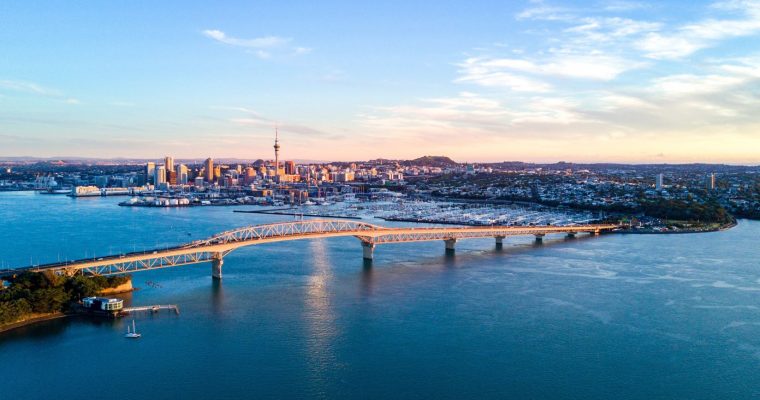
Looking at the economic horizon in 2022
Fleet ManagementAs we approach the end of the third quarter of the 2021-2022 financial year, the economic outlook for both the local and global economy in 2022 appears noticeably different to last year’s.
The overriding expectation from analysts is that 2022 will see a slowdown in global economic growth as supply chains continue to struggle to meet consumer demand for goods and services. Due to supply chain challenges, inflation is expected to have a major impact on the economic conditions of 2022. These inflationary pressures are forecast to lead to interest rate hikes, with many of the world’s major central banks, such as the US Federal Reserve and the Bank of England, tipped to raise their cash rates by as many as 25 basis points by December.
This expected rise in official interest rates will have important implications on fleet and finance managers who are planning to upgrade their vehicles in 2022, or businesses who have put off fleet upgrades in the wake of delivery delays caused by shortages in the manufacture of semiconductor chips in Taiwan and South Korea.
New Zealand’s economic outlook
In December 2021, the New Zealand Government’s 2022 Budget Policy Statement acknowledged the economy’s resilience through the pandemic, and cautiously predicted growth.
It also noted that ‘persistent domestic demand, supply-side pressures relating to labour/skills shortages, capacity constraints, and international supply-chain disruptions will increase inflationary pressures’, and that tighter monetary policy would be used to manage inflation.
New Zealand’s central bank has already proved it is more willing than others to raise interest rates to combat rising inflation. Experts tip more increases are coming in 2022.
But most importantly, these forecasts are laced with uncertainty. What will public health measures in response to the pandemic look like? How successful will the reopening of international borders be? Will global and local supply issues ease, and when?
Global economic outlook
On the world stage, the global economic outlook for 2022 is less optimistic than the New Zealand one. Central banks – like the World Bank and the International Monetary Fund (IMF) – expect a “pronounced slowdown” in growth, as increasing numbers of COVID cases present, supply issues push prices for food and energy upwards, and rising employment hit the world’s major economies such as China, Europe, UK and US.
The World Economic Forum forecasts that “after rebounding to an estimated 5.5% in 2021, global growth is expected to decelerate markedly in 2022 to 4.1%, reflecting continued COVID-19 flare-ups, diminished fiscal support and lingering supply bottlenecks”.
In their World Economic Outlook Update, published in January 2022, the IMF take the position that “[m]onetary policy in many countries will need to continue on a tightening path to curb inflation pressures, while fiscal policy – operating with more limited space than earlier in the pandemic – will need to prioritise health and social spending while focusing support on the worst affected.”
The US economic outlook
Expectations of the United States’ economy in 2022 mirrors that of the global outlook.
An analysis by independent body The Conference Board suggests that US Real GDP growth “will come in at 3.5 percent (year-over-year). Looking further ahead, we forecast that the US economy will grow by 2.6 percent (year-over-year) in 2022. This forecast contains a number of downward adjustments associated with Omicron, inflation, monetary policy, and other factors.”
Interest rate hikes are also on the menu for the US economy across 2022: “We expect year-over-year inflation to peak in Q1 2022 and then gradually moderate to a still high 3.0 percent in Q4 2022,” The Conference Board predicts. “To combat inflation, the Federal Reserve has indicated that its Quantitative Easing program will end in March and that rate hikes will follow shortly thereafter. We now anticipate at least four 25 basis point rate hikes in 2022 with more possible in 2023.”
Likewise, Bloomberg reports that Goldman-Sachs analysts informed clients in January 2022 they anticipate the US Federal Reserve will raise interest rates by 25 basis points on five occasions over the next year, when most sentiment suggests four separate interest rate hikes by December 2022.
The UK economic outlook
In the UK, the economic outlook for 2022 is a positive but conservative one (in the financial sense, not political). Bank of England, OECD and KPMG modelling all suggest around 3.9 percent to 4.5 percent growth in the economy for 2022, then slowing to around 2 percent in 2023.
“Consumption,” notes the OECD report, “is the main driver of growth during the projection period. Business investment will improve but continues to be held back by uncertainty, increased border costs following the exit from the EU Single Market [will weigh] on imports and exports, and unemployment will continue to decline.”
Inflation-driven interest rate rises are also a concern in the UK for 2022. The OECD believes that a rise in inflation will be driven by “higher energy and commodity prices and continuing supply shortages.”
Economists at KPMG expect inflation to peak at around 6 percent but “as energy prices gradually stabilise and supply chains recover, we expect inflation to moderate significantly by the end of this year and to approach the Bank of England’s 2 percent target by [April 2023].”
“The current elevated level of inflation could see the Bank of England act relatively swiftly this year in an attempt to stem any permanent rise in inflation expectations,” notes Chief Economist at KPMG Yael Selfin. “We currently pencil in three possible interest rate rises in 2022; in February, August, and November.”
In conclusion
For the New Zealand and the global economy, 2022 looks to be a mixed bag. While organisations such as the International Monetary Fund and the World Bank anticipate a slowdown in growth, analysts closer to home are predicting a positive rebound from COVID-enforced restrictions.
However, looming large over international and local economic analyses is, of course, the ongoing pandemic. The impacts of the virus and the potential for a new mutation, will have a large say in the performance of the global economy in 2022.
As well as COVID, interest rates and inflation will have a significant impact on the performance of many of the world’s biggest and most influential economies.
A rise in official interest rates will leave fleet and finance managers with a stark choice: join an already lengthy waiting list for new vehicles and hope the rates don’t go up too much between now and when the vehicle arrives, or wait for supply shortages to ease and hope you can access lower purchase prices that might offset any increases in the cost of borrowing money later in 2022.
Need help with your fleet and navigating the ups & downs of the 2022 economic outlook? Speak with SG Fleet/LeasePlan.
 Driving Insights
Driving Insights




